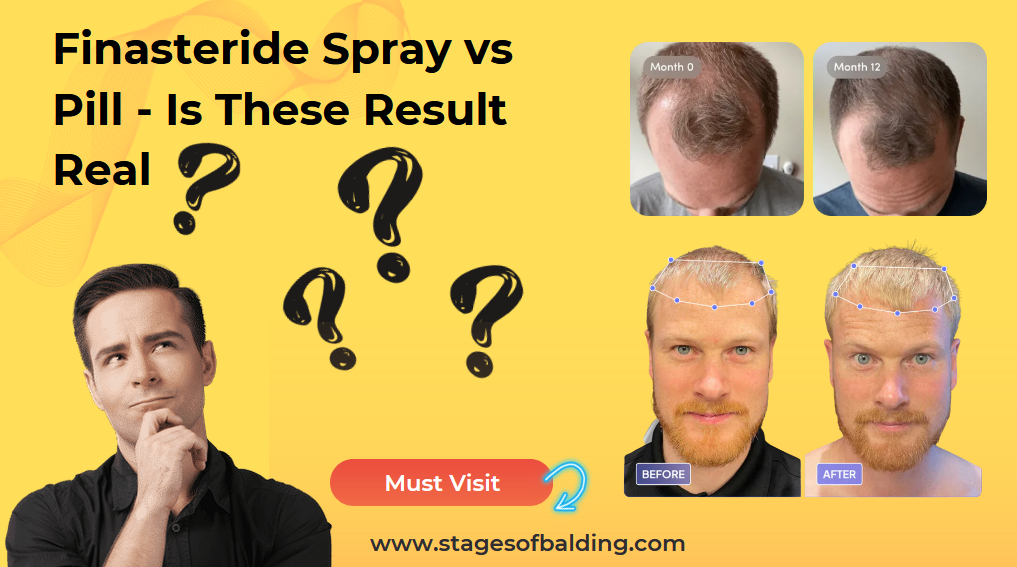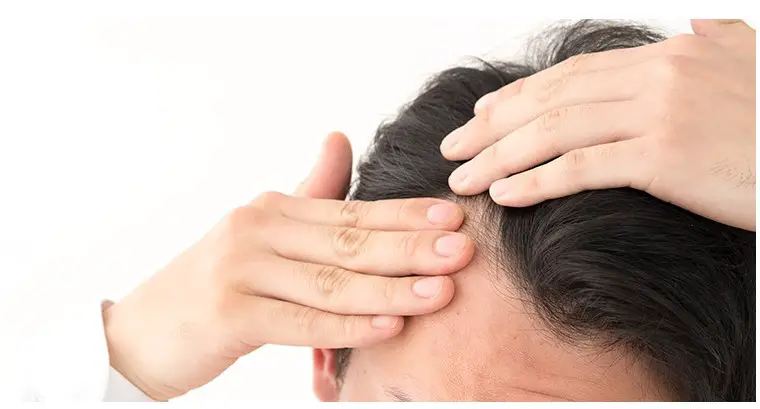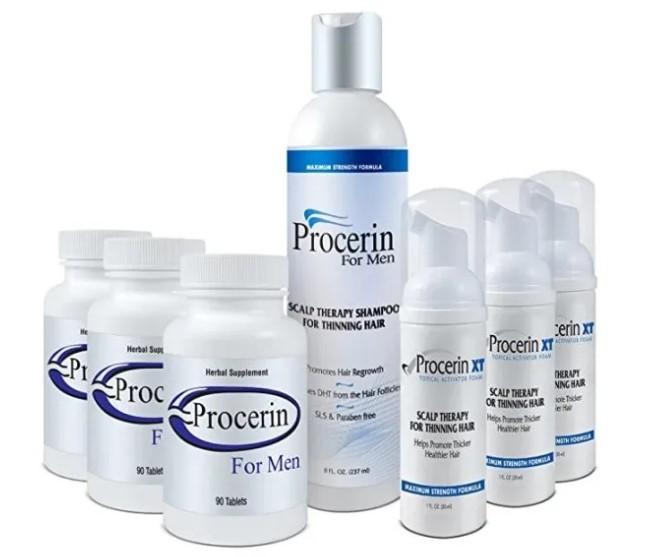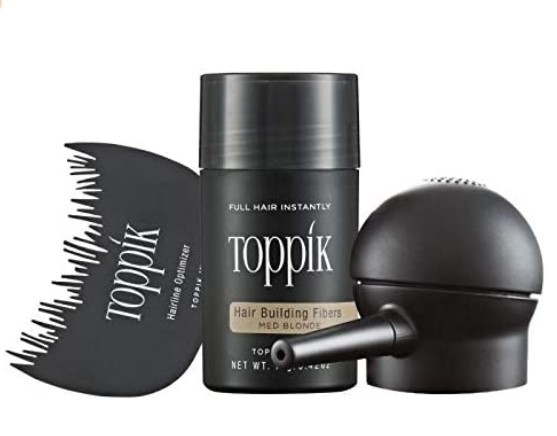When it comes to treating hair loss, finasteride has been a go-to solution for many. But did you know there are two main forms of this treatment – an oral pill and a topical spray? In this comprehensive guide, we’ll delve into the world of finasteride spray vs pill, helping you understand the differences, benefits, and potential side effects of each.
Whether you’re considering starting a finasteride treatment or looking to switch from one form to another, this article is designed to provide you with the information you need. We’ll explore real user experiences, expert opinions, and clinical studies to give you a well-rounded view of both treatments.
If you’re ready to take control of your hair loss journey, this guide is for you. Let’s dive in!
Interested in making your own topical finasteride? Check out our guide on how to make topical finasteride.
Understanding Finasteride
Finasteride is a medication that has been widely used in the treatment of male pattern baldness and benign prostatic hyperplasia. It works by inhibiting the conversion of testosterone to dihydrotestosterone (DHT), a hormone that can contribute to hair loss and prostate growth.
What is Finasteride?
Finasteride is a synthetic compound that belongs to a class of medications known as 5-alpha reductase inhibitors. It was first introduced in the 1990s under the brand name Proscar for the treatment of benign prostatic hyperplasia (BPH). Later, a lower-dose version, marketed as Propecia, was approved for the treatment of male pattern baldness.
If you’re interested in learning more about the history and development of finasteride, check out our finasteride success story.
How Does Finasteride Work?
Finasteride works by inhibiting the action of an enzyme called 5-alpha reductase. This enzyme is responsible for converting testosterone, the primary male sex hormone, into dihydrotestosterone (DHT). DHT is a more potent form of testosterone that can bind to receptors in the hair follicles and cause them to shrink, leading to hair loss.
By reducing the levels of DHT, finasteride can help to slow down hair loss and in some cases, even promote hair regrowth. However, it’s important to note that the effects of finasteride are not immediate. It can take several months of consistent use to see noticeable results.
For a more detailed explanation of how finasteride works, you can refer to this scientific study.
Finasteride Spray vs Pill: What are the Differences?
When it comes to treating hair loss, finasteride is a popular choice. However, it comes in two forms: an oral pill and a topical spray. Here are the key differences between the two:
- Administration: Oral finasteride is a pill taken once daily, while topical finasteride is a solution or spray applied directly to the scalp.
- Side Effects: Oral finasteride can have systemic side effects, including sexual side effects. Topical finasteride, due to its localized application, is believed to have fewer side effects.
- Effectiveness: Both forms can be effective in treating hair loss, but individual results may vary. Some studies suggest that topical finasteride can be as effective as the oral pill.
- Availability and Cost: Oral finasteride is generally cheaper and more widely available. Topical finasteride is not currently FDA-approved for hair loss and is typically compounded by a pharmacy or sold by companies outside of the U.S.
In the next section, we’ll compare the two main forms of finasteride treatment: the oral pill and the topical spray. Stay tuned!
Oral vs Topical Finasteride
When it comes to finasteride, there are two main forms of administration: oral and topical. Both forms have their own set of advantages and potential side effects. Let’s delve deeper into each of these treatments.
Oral Finasteride: An Overview
Oral finasteride, commonly known as Propecia or Proscar, is a pill that you take once a day. It’s been around for decades and has been proven to be effective in slowing down hair loss and promoting hair regrowth in many men.
However, like any medication, oral finasteride can have side effects. The most common ones include sexual side effects like decreased libido, erectile dysfunction, and ejac·
If you’re considering oral finasteride as a treatment option, it’s important to buy finasteride from a reputable source and consult with a healthcare professional to understand the potential risks and benefits.
Topical Finasteride: A Closer Look
Topical finasteride, on the other hand, is a relatively new form of treatment. It’s a solution or spray that you apply directly to your scalp. The idea behind topical finasteride is that it can provide the benefits of finasteride directly to your hair follicles without the systemic side effects associated with the oral form.
While research on topical finasteride is still ongoing, early studies suggest that it can be just as effective as oral finasteride in treating hair loss, with fewer side effects. However, it’s important to note that topical finasteride is not currently FDA-approved for hair loss, so it’s typically compounded by a pharmacy or sold by companies outside of the U.S.
If you’re interested in trying topical finasteride, you can learn Topical Finasteride vs Oral and even make your own solution at home.
Comparing Oral and Topical Finasteride
When comparing oral and topical finasteride, it’s important to consider a few key factors:
- Effectiveness: Both forms have been shown to be effective in treating hair loss, but individual results may vary.
- Side Effects: Oral finasteride has been associated with systemic side effects, while topical finasteride is believed to have fewer side effects due to its localized application.
- Convenience: Oral finasteride is easy to take, while topical finasteride requires a bit more effort as it needs to be applied to the scalp daily.
- Cost: Oral finasteride is generally cheaper and more widely available than topical finasteride.
Ultimately, the choice between oral and topical finasteride comes down to personal preference and individual tolerance to potential side effects. It’s always best to consult with a healthcare professional before starting any new treatment.
In the next section, we’ll delve into real user experiences and expert opinions to give you a well-rounded view of both treatments. Stay tuned!
Side Effects of Finasteride Spray vs Pill
When considering finasteride spray vs pill, it’s crucial to understand the potential side effects of each. Both forms of finasteride can cause side effects, but their severity and frequency can vary.
Oral Finasteride Side Effects
Oral finasteride, taken as a pill, can have systemic side effects. These can include sexual side effects like decreased libido, erectile dysfunction, and ejac·
Topical Finasteride Side Effects
On the other hand, topical finasteride is applied directly to the scalp and is believed to have fewer side effects due to its localized application. However, some users have reported skin irritation or rash at the application site.
Does Finasteride Expire?
Like all medications, finasteride does have an expiration date. It’s important to check this date before use to ensure the medication is still effective. Expired medications may not work as well and can sometimes lead to adverse effects.
How to Apply Topical Finasteride
Topical finasteride is a liquid solution that is applied directly to the scalp to treat hair loss. It’s a localized treatment that targets the areas affected by hair loss directly. Here are the steps to apply topical finasteride:
- Apply the product directly to the scalp: Using your fingers or a dropper, apply the amount of topical finasteride specified on the bottle directly to your scalp. It’s only necessary to cover the areas affected by hair loss. Spread it evenly, ensuring that you’re covering the patches completely. You don’t need to rub or blend it in, but you may want to use your hand or the dropper to spread it around evenly.
- Follow the instructions: Depending on the specific formula, you may need to apply it once or twice a day. Read the directions on the bottle to confirm.
- Be consistent: In order to fully see the effects of topical finasteride, you’ll need to remember to use the product every day. To make sure you remember, consider setting a calendar reminder on your phone, so you get an alert when it’s time to apply the treatment. Since you usually need to leave it in for some time, consider applying it before bedtime. Then, you can just sleep with it in and wash it out in the morning.
It’s important to note that topical finasteride should only be used as directed by a medical provider and is only recommended for men aged 18 and over who are experiencing male pattern baldness.
Comparing Finasteride with Other Treatments
In the quest to combat hair loss, finasteride is not the only option available. There are other treatments that you might consider, such as dutasteride and nutrafol. Let’s take a closer look at how these treatments compare to finasteride.
Dutasteride vs Finasteride
Dutasteride and finasteride are both medications used to treat hair loss. They work in similar ways by inhibiting the conversion of testosterone to dihydrotestosterone (DHT), a hormone that can cause hair loss. However, dutasteride is more potent and inhibits more DHT production. Some people consider switching from finasteride to dutasteride if they find finasteride is not effective enough. However, dutasteride may have more side effects due to its higher potency.
Nutrafol vs Finasteride
Nutrafol is a natural supplement designed to support hair growth. Unlike finasteride, which is a medication, Nutrafol uses a blend of vitamins, minerals, and plant extracts to support hair health. While Nutrafol can be a good option for those looking for a natural solution, it may not be as potent as finasteride or dutasteride.
Topical Finasteride & Minoxidil Spray
Combining topical finasteride and minoxidil in a spray is another approach to treating hair loss. Minoxidil is a topical treatment that helps stimulate hair growth, and when combined with finasteride, it can provide a more comprehensive approach to treating hair loss.
Remember, it’s always best to consult with a healthcare professional before starting any new treatment. For more information on different hair loss treatments, check out Provillus Vs Propecia for a comparison guide.
Experiences and Real User Reviews from Reddit
Reddit is a treasure trove of real user experiences and reviews. When it comes to the debate of finasteride spray vs pill, Reddit users have shared their personal experiences, shedding light on the effectiveness and side effects of both treatments.
Many users have reported positive results with both oral and topical finasteride. Some users on Reddit have shared their finasteride results after 6 months of use, with many reporting significant hair regrowth and reduced hair loss.
However, the side effects of oral finasteride have been a point of concern for some users. Some Reddit threads discuss the sexual side effects associated with oral finasteride, with users sharing their personal experiences and concerns.
On the other hand, topical finasteride users have reported fewer side effects. Some users have even shared their before and after photos to showcase the effectiveness of topical finasteride.
For a more in-depth look at real user experiences, check out this Reddit discussion on topical finasteride vs oral.
Expert Opinions and Clinical Studies
While user experiences provide valuable insights, it’s also important to consider expert opinions and clinical studies.
Experts generally agree that both oral and topical finasteride can be effective in treating hair loss. However, they often emphasize the importance of individual tolerance to potential side effects when choosing between the two treatments.
Clinical studies have also shown promising results for both forms of finasteride. For instance, a study published in the Journal of Drugs in Dermatology found that topical finasteride and minoxidil spray was effective in promoting hair growth in men with androgenetic alopecia.
However, it’s important to note that while topical finasteride has shown promising results in studies, it is not currently FDA-approved for hair loss. Therefore, it’s crucial to consult with a healthcare professional before starting any new treatment.
For more information on the effectiveness and side effects of finasteride, you can refer to these scientific studies: Study 1, Study 2.
Frequently Asked Questions about Finasteride Spray vs Pill
In this section, we’ll address some of the most common questions related to finasteride spray vs pill. These FAQs are based on common queries and concerns about this topic.
Is topical finasteride as effective as the pill?
Both forms of finasteride can be effective in treating hair loss. However, individual results may vary. Some studies suggest that topical finasteride can be just as effective as the oral pill, with fewer side effects due to its localized application.
What are the side effects of finasteride?
The side effects of finasteride can vary depending on the form of administration. Oral finasteride can have systemic side effects, including sexual side effects like decreased libido, erectile dysfunction, and ejac·
Can I switch from oral finasteride to topical?
Yes, some people switch from oral finasteride to topical due to side effects or personal preference. However, it’s always best to consult with a healthcare professional before making any changes to your treatment plan.
How is topical finasteride applied?
Topical finasteride is typically applied directly to the scalp once a day. For a step-by-step guide on how to apply topical finasteride, check out our how-to guide.
Is topical finasteride FDA approved for hair loss?
As of now, topical finasteride is not FDA-approved for hair loss. It’s typically compounded by a pharmacy or sold by companies outside of the U.S. Always consult with a healthcare professional before starting any new treatment.
Conclusion
In the world of hair loss treatments, finasteride has proven to be a reliable solution. Whether in the form of an oral pill or a topical spray, finasteride can help slow down hair loss and even promote hair regrowth in many individuals.
However, as we’ve explored in this guide, the choice between finasteride spray vs pill is not a one-size-fits-all solution. It depends on various factors, including your personal tolerance to potential side effects, convenience, and cost.
Remember, it’s always best to consult with a healthcare professional before starting any new treatment. They can provide you with personalized advice based on your specific needs and circumstances.
We hope this guide has provided you with a comprehensive understanding of finasteride spray vs pill. If you’re interested in exploring other hair loss treatments, check out our article on finasteride vs saw palmetto.
Key Takeaways
As we wrap up this comprehensive guide on finasteride spray vs pill, here are the key points to remember:
- Both oral and topical finasteride can be effective in treating hair loss. However, individual results may vary.
- Oral finasteride is easy to take and generally cheaper, but it can have systemic side effects, including sexual side effects.
- Topical finasteride is applied directly to the scalp and is believed to have fewer side effects due to its localized application. However, it’s not currently FDA-approved for hair loss.
- User experiences and clinical studies provide valuable insights into the effectiveness and side effects of both forms of finasteride.
- Always consult with a healthcare professional before starting any new treatment.
We hope this guide has been informative and helpful in your journey to understanding and choosing between finasteride spray and pill. For more insights and information on hair loss treatments, don’t forget to check out our other articles on stagesofbalding.com.
- AI Powered Bald Filter Online 2024: See Yourself with No Hair! - January 19, 2024
- Harklinikken Bad Reviews 2024: Analyzing Negative Feedbacks - January 18, 2024
- How to Get the Alex Eubank Hair | Step-By-Step Tutorial 2024 - January 18, 2024









